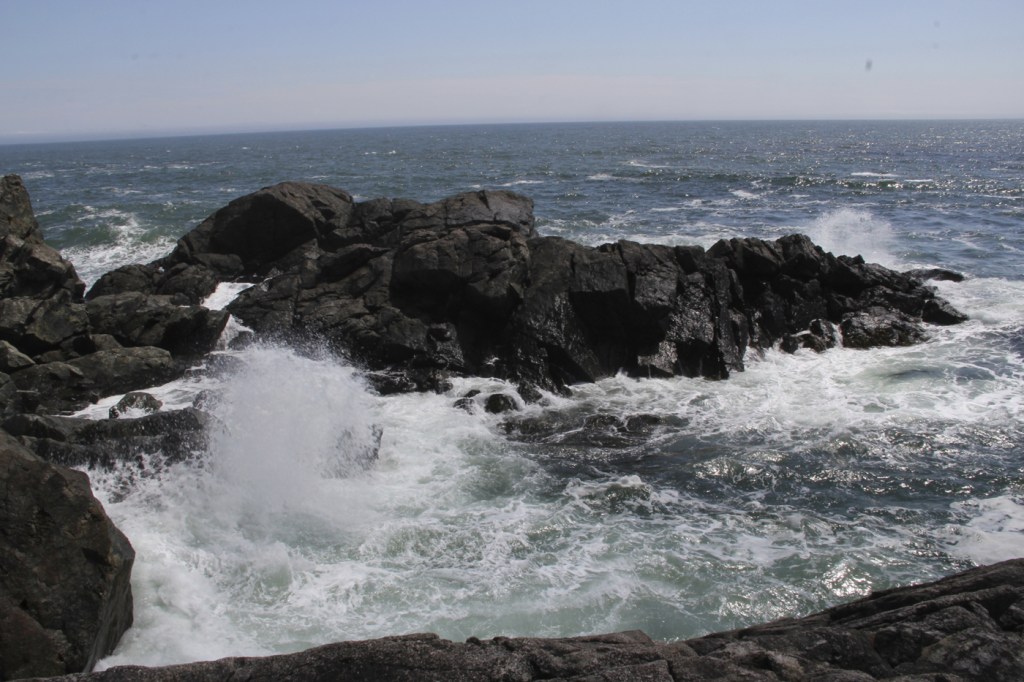How does marine life survive climate extremes?

An interdisciplinary team of researchers at Northeastern University has received a four-year, $1.2 million grant from the National Science Foundation to develop new methods for marine ecologists to study how marine organisms respond to climate extremes.
The researchers will specifically examine organisms in the Gulf of Maine, with the goal of developing novel nonlinear models that can more accurately predict the ecosystem-level effects of climate change. They hope this work will be a catalyst for further scientific study of and advancements in marine sustainability.
The team comprises principal investigator Jennifer Dy, associate professor in the Department of Electrical and Computer Engineering; Adam Ding, associate professor in the Department of Mathematics; Tarik Gouhier, assistant professor in the Department of Marine and Environmental Sciences; and Auroop Ganguly, associate professor in the Department of Civil and Environmental Engineering.
“The key to addressing the science questions is to develop computational methods for discovering associations and predictive models from nonlinear and non-stationary systems, where the dependence structures can be complex in space and time,” Dy said.
The project will leverage each of its team members’ expertise. Ding has been developing a new nonlinear dependence measure. “Equitable nonlinear dependence measure is a ‘hot’ area, with articles, rebuttals, and counter-rebuttals appearing in top interdisciplinary journals such as Science and PNAS,” he said. “We are cautiously optimistic that the new approach we are working on may have promise.”
The grant is from the NSF’s Cyber-Innovation for Sustainability Science and Engineering, or CyberSEES, program, which aims to advance interdisciplinary research in which the science and engineering of sustainability are enabled by new advances in computing, and where computational innovation is grounded in real-life, domain-specific challenges.
The research dovetails with Northeastern’s commitment to use-inspired research that addresses global challenges, particularly in the areas of health, security, and sustainability.
“The overall focus of CyberSEES is to combine mathematics and computer science to look at big goals in sustainability science,” Gouhier said. “That’s what is so exciting about being part of this team. We are in a very unique position to address an interdisciplinary project like this one.”
The project will focus on intertidal marine communities at 18 locations along the Gulf of Maine. The researchers will study intertidal organisms because while these organisms spend a majority of their life underwater, they are exposed to air temperature during low tide.
“They are going to be susceptible to increased desiccation stress under climate change,” Gouhier said. “So temperature extremes are going to have a strong impact on their survivorship. We focused on temperature because it is the most well-understood, well-quantified environmental variable that will be changing in the near- to long-term future, and its impact on the organization of intertidal communities is already well established.”
This grant builds upon Gouhier and Ganguly’s work through a Northeastern Tier 1 grant last year on how climate change would affect marine ecosystems. Tier 1 is Northeastern’s internal grant program that supports interdisciplinary research. A former research associate in Ganguly’s SDS Lab, Debasish Das, developed a method with Dy and Ganguly for improving projections of climate extremes at high resolutions. This work, funded by an ongoing NSF Expeditions in Computing grant, provided an important piece of the puzzle.
Ganguly, who studies climate extremes, water sustainability, critical infrastructures resilience, and the supply chain, is excited about the potential general applicability of the methods as well as the implications for climate science.
“A key knowledge gap in climate science is our inability to provide credible projections at high enough resolutions,” he said. “The new methods proposed here may provide a way forward, and perhaps even lead to new understanding and hypothesis generation.”





